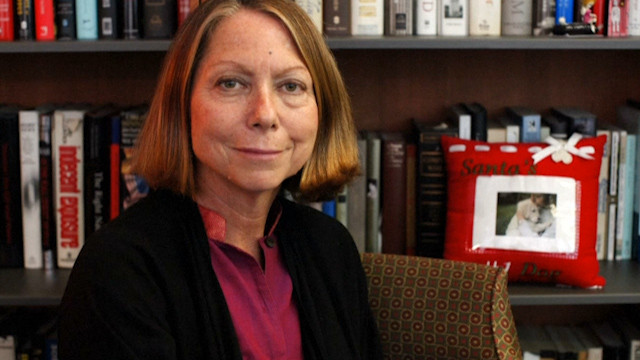Jill Abramson Fired by New York Times: Why The Media is Failing Women

On Thursday afternoon, Jill Abramson was escorted out of the New York Times Building, having been sacked from her position as executive editor.
She was reportedly stripped of her title by publisher Arthur Sulzberger Jr, because of what he called an "issue of management" when addressing the staff.
Abramson was immediately replaced by Dean Baquet, the paper's former managing editor.
The media maelstrom surrounding Abramson's ousting has led to widespread speculation, yet no-one is sure exactly why Abramson was forced to leave. It is notable, however, that many of the allegations – from equal pay to a disagreement over the appointment of a new female editor from the Guardian – revolve around Abramson's approach to management as a female editor. While she gained the job on journalistic merit, it seems that her firing was based on deeply-engrained prejudices in the newsroom.
In the New Yorker, Ken Auletta suggested that Abramson ruffled feathers after finding out her salary was less than that of her predecessor, Bill Keller, who left the post in September 2011.
"Abramson discovered that her pay and pension benefits as both executive editor and, before that, as managing editor were considerably less than the pay and pension benefits of Bill Keller, the male editor whom she replaced in both jobs."
Auletta also suggested that Abramson had been fired for being "too bossy". Last July, Newsweek ran a profile titled "Good Jill, Bad Jill", which described her "high-handed, impatient... and obstinate nature". Sulzberger was quoted as calling Abramson "brusque". According to Auletta, Abramson's probing into the alleged pay gap fed into the New York Times' rhetoric of her "pushy" nature.
The word "pushy" is undeniably gendered, and smacks of a world in which women are chastised for assuming a management style outside of their allotted gender role. To be a boss requires bossiness. That this is a potential reason for firing shows that this is a deeper issue for women in the workplace. As noted in Forbes, Sulzberger Jr has been praised for his tenacious leadership of the New York Times corporation – and has not once been described as "pushy".
Abramson's reporting and editing career ranked her among the top 20 most powerful women in the world, and there is no ground to question her ability as an editor. In her two-and-a-half years at the top, revenues for the New York Times rocketed – but if the speculations are anything to go by, her "ability" has been measured on personality – not performance.
The intertwining of personality and ability is a problem encountered by most women who achieve top roles. Abramson's refusal to morph into the ultimate female boss – to manage assertively but maintain "feminine" approachability – ultimately led to the "issue of management" that spelled her end.
Abramson's removal has been met with anger by female journalists. Joe Pompeo, a senior reporter at Capital New York, summed up the meeting in which the New York Times's top editors were informed of the move. "National editor Alison Mitchell suggested that Abramson's firing wouldn't sit well with a broad swath of female Times journalists who saw her as a role model," he wrote.
Sulzberger's response to Abramson's firing was simple: When women get to top management positions, they are sometimes fired, as men are. While this is true, the first female executive editor is not just another editor. And this is not just any firing.
Speaking to IBTimes UK, Eleanor Mills, chairwoman of Women in Journalism and editorial director of the Sunday Times, said: "Given the dearth of women at the top of newspapers, globally, it is always depressing to lose one - and for two such senior female journalists as Jill Abramson and Le Monde's Natalie Nougayrede to go on the same day is not great for the journalistic sisterhood, to put it mildly."
"Newspapers can be clicky, macho places it is certainly possible that these women fell foul of misogynistic internal cultures, or perhaps, they simply got on the wrong side of internal politics," she added.
Women are still hugely underrepresented in journalism and under Abramson's leadership, women were hired and their bylines published.
Earlier this year, an American Society of News Editors census revealed that in 1999, newsrooms were 63.1% male and 36.9% female. In 2013, the figures were worse – with 63.7% male and 36.3% female. In 90 years, there has never been a female director general of the BBC. At the 2013 UK Press Awards, the female to male ratio was 4:17 – the lowest in five years.
Abramson was good at her job and she provided a role model for women in the field, considering there are no historic female role models in journalism. In her firing, she, and dozens of women in the newsroom, have been let down.
© Copyright IBTimes 2025. All rights reserved.




















